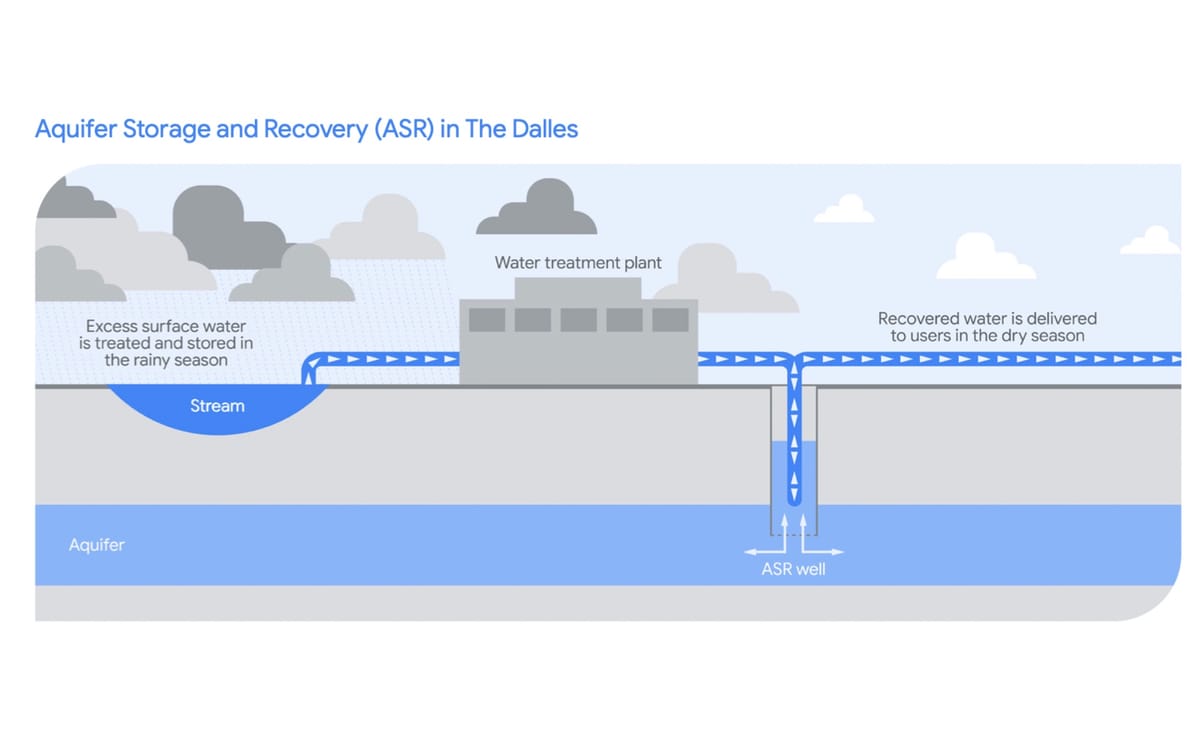Report on Minnesota’s Water Stewardship and Alignment with Sustainable Development Goals
This report outlines the State of Minnesota’s ongoing efforts to manage and protect its water resources, with a specific focus on how these initiatives align with the United Nations Sustainable Development Goals (SDGs), particularly SDG 6 (Clean Water and Sanitation), SDG 14 (Life Below Water), SDG 15 (Life on Land), and SDG 17 (Partnerships for the Goals).
1.0 Introduction: A Multi-Stakeholder Approach to Water Governance
For decades, Minnesota has engaged in comprehensive efforts to protect its 11,842 lakes and 92,000 miles of rivers. These actions, undertaken by state and local governments and water management organizations, represent a commitment to achieving SDG 6. A new initiative, the Attorney General’s Task Force on the Future of Minnesota’s Water, has been established to advance this commitment by fostering innovative stewardship strategies in the face of increasing demand and climate change impacts, directly addressing SDG 13 (Climate Action).
2.0 Key Challenges in Achieving Water-Related SDGs
Significant progress has been made in regulating point sources of pollution. However, persistent challenges remain, primarily from non-point sources, which impede progress towards clean water targets.
2.1 Non-Point Source Pollution
Non-point source pollution, mainly landscape runoff, remains the primary obstacle to achieving comprehensive water quality. This challenge directly impacts several SDGs:
- SDG 6 (Clean Water and Sanitation): Runoff from agriculture, including nitrates from fertilizers, contaminates groundwater and surface water, threatening drinking water safety.
- SDG 12 (Responsible Consumption and Production): The impact of crop and livestock agriculture highlights the need for more sustainable production patterns.
- SDG 15 (Life on Land): Land use practices are directly linked to the health of adjacent water bodies.
2.2 Emerging Pressures
New and intensifying pressures complicate water management efforts. These include:
- Climate Change: Altered precipitation patterns lead to more volatile water flows and increased sediment runoff, a direct challenge to SDG 13.
- Groundwater Contamination: Sensitive aquifers are threatened by nitrates and PFAS contamination.
- Increased Demand: Growing municipal and industrial needs, such as for data centers, strain water resources.
3.0 Governance Framework and Partnerships for the Goals (SDG 17)
Minnesota’s water governance relies on a collaborative framework involving multiple state agencies and legislative acts, embodying the principles of SDG 17.
3.1 Key Governmental Bodies
- Minnesota Pollution Control Agency (MPCA)
- Department of Natural Resources (DNR)
- Department of Agriculture (MDA)
- Board of Water and Soil Resources
3.2 Legislative and Financial Mechanisms
The 2006 Clean Water Legacy Act and the associated Clean Water Fund provide a policy and financial foundation for projects aimed at protecting and restoring water quality. The Clean Water Council advises on the implementation of this act, ensuring that funds are directed toward projects that help meet SDG targets.
4.0 The Role of the Task Force on the Future of Minnesota’s Water
Convened in June, the task force is a multi-sectoral body designed to develop forward-looking recommendations for water stewardship. Its composition reflects a commitment to SDG 17 (Partnerships for the Goals).
4.1 Composition and Mandate
- Members: The task force includes four state lawmakers, four state agency representatives, and 15 citizens representing diverse interests.
- Objective: To develop a broad set of recommendations for policymakers, regulators, businesses, and communities to ensure the long-term health of Minnesota’s water, aligning with the 2030 Agenda for Sustainable Development.
5.0 Public Engagement and Data Collection
Citizen involvement is critical for monitoring water quality and raising public awareness, contributing to a society-wide effort to achieve water-related SDGs.
5.1 Public Awareness Initiatives
The “We Are Water” traveling exhibit serves as a key educational tool, informing communities about water quality issues and local stewardship efforts. This initiative fosters a sense of shared responsibility essential for achieving the SDGs.
5.2 Volunteer Water Monitoring Program
The MPCA’s volunteer program leverages citizen science to gather essential data on water clarity and health. This program is a practical application of SDG 17, where community partnerships contribute directly to the scientific understanding needed to manage resources effectively. Data from over 1,117 volunteers at hundreds of sites informs the state’s progress reports, such as the MPCA’s “Flowing forward: Trends in Minnesota’s lakes and rivers,” which tracks progress toward achieving SDG 6 and SDG 14.
Analysis of Sustainable Development Goals in the Article
1. Which SDGs are addressed or connected to the issues highlighted in the article?
- SDG 6: Clean Water and Sanitation – The article’s central theme is the protection and restoration of water quality in Minnesota’s lakes, rivers, and groundwater, directly addressing the core of this goal.
- SDG 11: Sustainable Cities and Communities – The mention of “municipal stormwater” as a major issue connects water pollution to urban environments.
- SDG 12: Responsible Consumption and Production – The article highlights pollution from agricultural practices, such as “nitrates in fertilizer” and “manure management,” which relates to sustainable production patterns.
- SDG 13: Climate Action – The text explicitly identifies “global climate change” as a pressure on water resources and notes observations of water levels becoming “flashier,” linking climate impacts to water management.
- SDG 14: Life Below Water – By addressing land-based pollution sources like nitrate runoff in the Mississippi River watershed, the article touches upon preventing nutrient pollution that affects downstream marine ecosystems.
- SDG 15: Life on Land – The focus on protecting and restoring freshwater ecosystems, including “11,842 lakes and 92,000 miles of rivers and streams,” and managing runoff from the landscape directly relates to this goal.
- SDG 17: Partnerships for the Goals – The article describes extensive collaboration through the “Task Force on the Future of Minnesota’s Water,” which includes lawmakers, state agencies, and citizens, as well as volunteer programs, embodying the multi-stakeholder partnerships essential for achieving the SDGs.
2. What specific targets under those SDGs can be identified based on the article’s content?
- SDG 6: Clean Water and Sanitation
- Target 6.3: Improve water quality by reducing pollution. The article is fundamentally about this target, discussing efforts to manage “non-point sources” of pollution, including runoff from agriculture, “nitrate contamination,” and “PFAS source reduction.”
- Target 6.5: Implement integrated water resources management. The creation of the “Task Force on the Future of Minnesota’s Water” with its diverse membership, and the coordinated work of agencies like the MPCA, DNR, and MDA, exemplify efforts towards integrated management of water resources across different sectors and watersheds.
- Target 6.6: Protect and restore water-related ecosystems. The article opens by stating the decades-long work “to protect and restore the water quality in Minnesota’s 11,842 lakes and 92,000 miles of rivers and streams,” and mentions concerns for “vulnerable aquifers,” directly aligning with this target.
- Target 6.b: Support and strengthen the participation of local communities. The MPCA’s “volunteer water monitoring program” with “1,117 volunteer water monitors” is a clear example of strengthening community participation in water quality management.
- SDG 11: Sustainable Cities and Communities
- Target 11.6: Reduce the adverse per capita environmental impact of cities. The identification of “municipal stormwater” as a major issue to be addressed points to efforts to manage urban sources of water pollution.
- SDG 14: Life Below Water
- Target 14.1: Prevent and significantly reduce marine pollution of all kinds, in particular from land-based activities. The focus on regulating “nitrates in groundwater” and runoff from agricultural lands within the “Mississippi River watershed” is a direct effort to reduce land-based nutrient pollution that impacts marine environments like the Gulf of Mexico.
- SDG 15: Life on Land
- Target 15.1: Ensure the conservation, restoration and sustainable use of terrestrial and inland freshwater ecosystems. This target is addressed by the overarching goal described in the article to protect Minnesota’s vast network of lakes and rivers from pollution and degradation.
- SDG 17: Partnerships for the Goals
- Target 17.17: Encourage and promote effective public, public-private and civil society partnerships. The article details partnerships at multiple levels: the task force bringing together “four state lawmakers, four state agency representatives and 15 citizens,” the collaboration between various state agencies, and the partnership with citizens through the volunteer monitoring program.
3. Are there any indicators mentioned or implied in the article that can be used to measure progress towards the identified targets?
- Water Clarity: The article explicitly mentions that volunteers in the monitoring program use a “Secchi disk” to record “the depth of water clarity, one of the primary measures of water quality.” This is a direct indicator for Target 6.3.
- Sediment Levels: A volunteer monitor observed that water has become “flashier and with more noticeable sediment.” The article also notes that “Hawk Creek has significant impairment from sediment.” This implies that sediment level is a key indicator of water quality and pollution (Target 6.3).
- Nitrate Contamination Levels: The article discusses the issue of “nitrate contamination in vulnerable aquifers” and cites an MPCA study stating that in southeast Minnesota, “about 90% comes from nitrates in fertilizer.” Measuring nitrate levels in groundwater and surface water is an implied indicator for Target 6.3.
- Number of Volunteer Monitors and Sites: The article provides specific numbers for community participation: “1,117 volunteer water monitors” and monitoring at “629 lakes and at 607 stream sites.” These figures serve as direct indicators for measuring progress on Target 6.b.
- Existence of Multi-Stakeholder Bodies: The formation and operation of the “Task Force on the Future of Minnesota’s Water” and the “Clean Water Council” are themselves indicators of progress towards implementing integrated water resources management (Target 6.5) and fostering partnerships (Target 17.17).
4. Table of SDGs, Targets, and Indicators
| SDGs | Targets | Indicators Identified in the Article |
|---|---|---|
| SDG 6: Clean Water and Sanitation | 6.3: Improve water quality by reducing pollution. | Water clarity readings (using a Secchi disk); Levels of sediment impairment; Levels of nitrate contamination in groundwater and surface water. |
| 6.5: Implement integrated water resources management. | Existence and operation of multi-stakeholder bodies like the Task Force on the Future of Minnesota’s Water. | |
| 6.6: Protect and restore water-related ecosystems. | Number of lakes (11,842) and miles of rivers (92,000) under protection and restoration efforts. | |
| 6.b: Support and strengthen the participation of local communities. | Number of volunteer water monitors (1,117); Number of volunteer monitoring sites (629 lakes and 607 stream sites). | |
| SDG 11: Sustainable Cities and Communities | 11.6: Reduce the adverse per capita environmental impact of cities. | Efforts to manage pollution from municipal stormwater (implied). |
| SDG 14: Life Below Water | 14.1: Prevent and reduce marine pollution from land-based activities. | Regulation and reduction of nitrate runoff from agricultural sources into the Mississippi River watershed. |
| SDG 15: Life on Land | 15.1: Ensure the conservation and restoration of inland freshwater ecosystems. | Implementation of programs to protect and restore water quality in lakes and rivers. |
| SDG 17: Partnerships for the Goals | 17.17: Encourage effective public, public-private and civil society partnerships. | Collaboration between state agencies, a multi-stakeholder task force (government, agencies, citizens), and a volunteer civil society program. |
Source: minnpost.com







